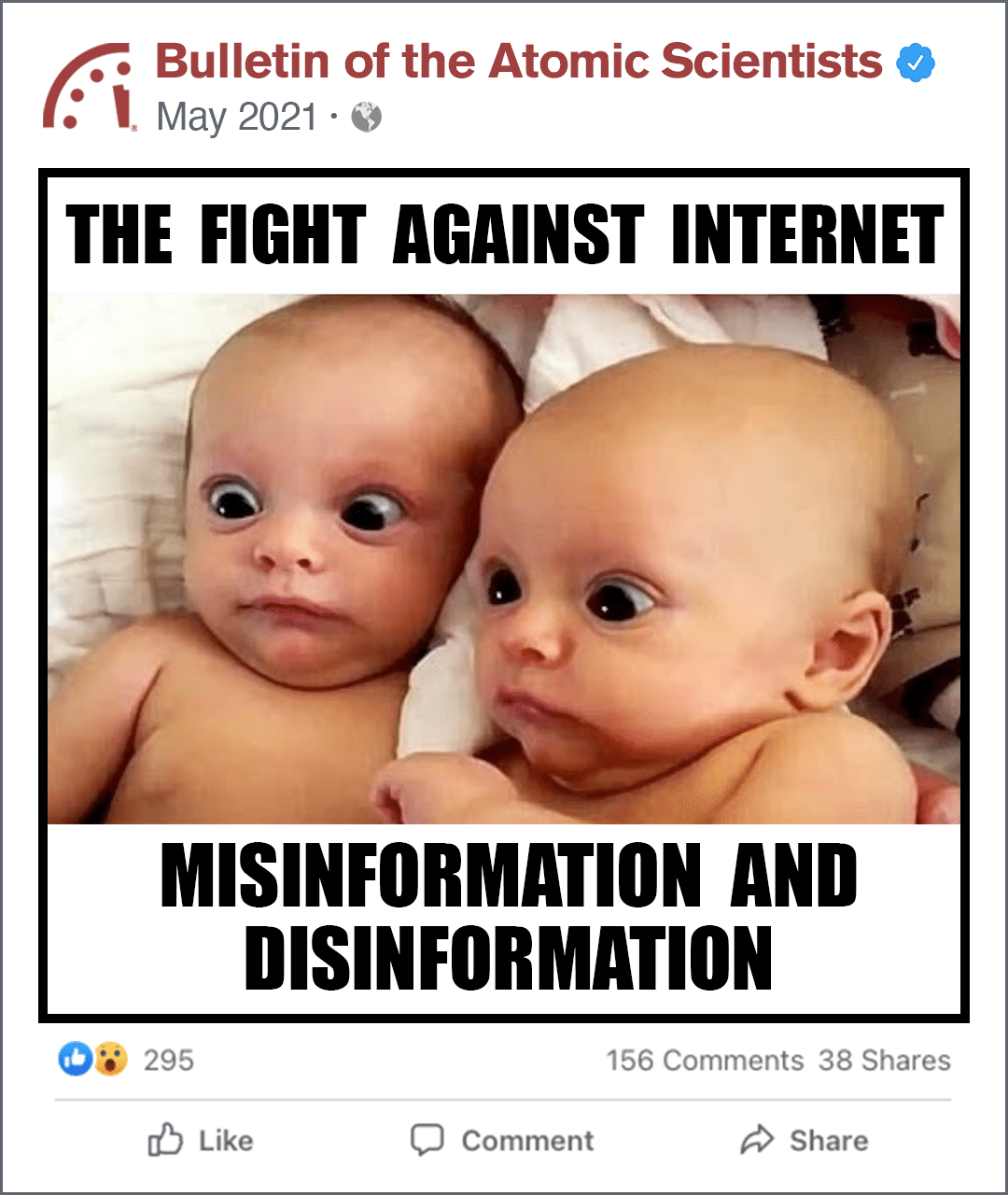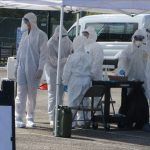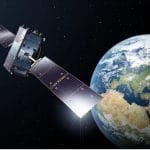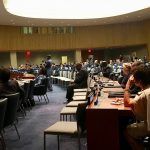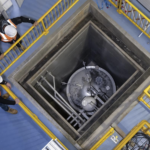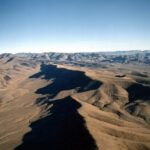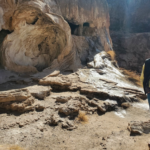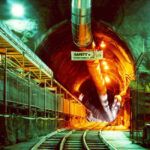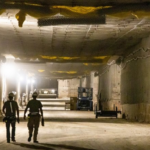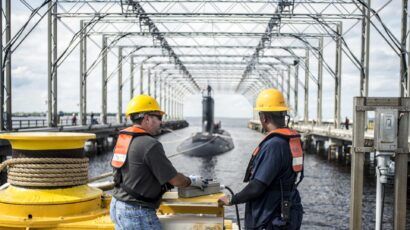Bauer S and Urquhard A. 2016. “Thermal and Physical Properties of Reconsolidated Crushed Rock Salt as a Function of Porosity and Temperature,” Acta Geotechnica 11, 913. Bruno J and Ewing RC 2006 “Spent Nuclear Fuel,” Elements 2, 343. Butcher BM. 1993. “The Advantages of Salt/Bentonite Backfill for Waste Isolation Pilot Plant Disposal Rooms,” MRS Proceedings, 333, 911 Chan KS, Bodner SR, and Munson DE. 1998. “Recovery and Healing of Damage in WIPP Salt,” International Journal of Damage Mechanics 7, 143. Day DE, Ray CS, and Kim C. 2004. “Iron Phosphate Glasses: An Alternative for Vitrifying Certain Nuclear Wastes,” Graduate Center for Materials Research, University of Missouri-Rolla. Diakov A 2013 “Status and Prospects for Russia’s Fuel Cycle,” Science & Global Security 21, 167. Ewing RC. 1999. “Nuclear Waste Forms for Actinides,” Proceedings of the National Academy of Sciences 96, 3432. Ewing RC and Macfarlane A. 2000. “Yucca Mountain,” Science 296, 659. Ewing RC and Park S. 2021. “The Concept of Geological Disposal of Highly Radioactive Nuclear Waste” (in press in Encyclopedia of Nuclear Energy). Ewing RC, Whittleston RA, Yardley BWD. 2016 “Geological Disposal of Nuclear Waste: a Primer” Elements 12, 233. International Atomic Energy Agency 2020 “Country Nuclear Power Profiles: Russian Federation” Available at: www.cnpp.iaea.org/countryprofiles/Russia/Russia.htm. International Atomic Energy Agency. 2000. Nuclear Fuel Cycle and Materials Section, “Multi-Purpose Container Technologies for Spent Fuel Management”. International Panel on Fissile Materials 2015 “Global Fissile Material Report 2015”. Keefer WR, Whitney JW and Buesch DC. 2007. “Geology of the Yucca Mountain Site Area, Southwestern Nevada,” The Geology and Climatology of Yucca Mountain and Vicinity, Southern Nevada and California. King F, Lilja C, and Vähänen M. 2013. “Progress in the Understanding of the Long-Term Corrosion Behaviour of Copper Canisters,” Journal of Nuclear Materials 438, 228. Kochkin BT and Petrov VA. 2015. “Long-term Prediction for Seismic Hazard for Radioactive Waste Disposal,” Russian Geology and Geophysics, 56, 1074. Krall L and Macfarlane A 2018 “Burning Waste or Playing with Fire? Waste Management Considerations for Non-Traditional Reactors,” Bulletin of the Atomic Scientists 74, 326. Laverov NP etal 2016 “The Russian Strategy of Using Crystalline Rock as a Repository for Nuclear Waste,” Elements 12, 253. Long JCS and Ewing RC. 2004. “Yucca Mountain: Earth-Science Issues at a Geologic Repository for High-Level Nuclear Waste,” Annual Review of Earth and Planetary Sciences 32, 363. Maher K, Bargar JR, and Brown KL Jr. 2013. “Environmental Speciation of Actinides” Inorganic Chemistry 52, 3510. Manaktala HK. 1992. “An Assessment of Borosilicate Glass as a High-Level Waste Form,” Center for Nuclear Waste Regulatory Analyses. Metlay S. 2016. “Selecting a Site for a Radioactive Waste Repository: A Historical Analysis,” Elements 12, 269. Nelson RA. 2011. “WIPP Status and Plans – 2011,” WM2011 Conference. Nikitin A. 2018. “The Underground Research Laboratory,” Bellona Working Paper. Novikov AP et al. 2006. “Colloid Transport of Plutonium in the Far-Field of the Mayak Production Association, Russia,” Science 314, 638. Nuclear Energy Institute 2019 “Safe, Secure Transportation of Used Nuclear Fuel. OECD Nuclear Energy Agency and International Atomic Energy Agency. 2002. “An International Peer Review of the Yucca Mountain Project TSPA-SR: Total System Performance Assessment for the Site Recommendation (TSPA-SR)”. Ojavan MJ and Lee WE. 2011. “Glassy Wasteforms for Nuclear Waste Immobilization,” Metallurgical and Materials Transactions A 42, 837. Ojovan MJ, Lee WE, and Kalmykov SN. 2019. “Immobilisation of Radioactive Wastes in Glass,” An Introduction to Nuclear Waste Immobilization, 3rd ed., 319. Polyakov et al. 2014. “Setting Up a Safe Deep Repository for Long-Lived HLW and ILW in Russia: Current State of the Works,” The Safety Case for Deep Geological Disposal of Radioactive Waste: 2013 State of the Art Symposium Proceedings. Powers DW et al., 1978. “Geological Characterization Report, Waste Isolation Pilot Plant (WIPP) Site, Southeastern New Mexico,” Sandia National Laboratory Report. Price RH and Bauer SJ. 1985. “Analysis of the Elastic and Strength Properties of Yucca Mountain Tuff, Nevada,” 26th U.S. Symposium on Rock Mechanics. Reedlunn B and Bean J. 2019. “Simulations of Pipe Overpack Container Compaction at the Waste Isolation Pilot Plant,” Sandia National Laboratories Report. Ryan BJ and Kipp K.L. Jr. 1997 “Ground-Water Flow and Contaminant Transport of a Radioactive-Materials Processing Site, Wood River Junction, Rhode Island” U.S. Geological Survey Professional Paper, 1571. State of Nevada, 1999. “Earthquakes Rocking Yucca Mountain Area” (1999) Available at: http://www.state.nv.us/nucwaste/news/quake/quake1.htm Swift PN and Bonano J 2016 “Geological Disposal of Nuclear Waste in Tuff: Yucca Mountain (USA),” Elements 12, 263. Tracy CL, Dustin MK, Ewing RC. 2016. “Reassess New Mexico’s Nuclear-Waste Repository,” Nature 529, 149. Tsang C, Neretnieks I, and Tsang Y. 2015.“Hydrologic Issues Associated with Nuclear Waste Repositories,” Water Resources Research 51, 6923. U.S. Department of Energy. 2002. “Yucca Mountain Science and Engineering Report Technical Information Supporting Site Recommendation Consideration,” Office of Civilian Radioactive Waste Management. U.S. Department of Energy, 1997 “Linking Legacies: Connecting the Cold War Nuclear Weapons Production Processes to Their Environmental Consequences, Office of Environmental Management”. US Department of Energy. 1993. “Compliance Certification Application for the Waste Isolation Pilot Plant,” Appendix IRD, Title 40, CFR Part 191.91-029. U.S. Energy Information Administration 2020 “What is U.S. Electricity Generation by Energy Source?” (2020). Available at: www.eia.gov/tools/faqs/faq.php?id=427&t=3 US Senate Committee on Environment and Public Works Majority Staff. 2006 “Yucca Mountain: The Most Studied Real Estate on the Planet”. Yim M and Murty KL. 2000. “Materials Issues in Nuclear-Waste Management,” JOM 52, 26. Yim M and Simonson SA 2000 “Performance Assessment Models for Low Level Radioactive Waste Disposal Facilities: A Review,” Progress in Nuclear Energy 36, 1. Notes [1]See Laverov et al. 2016; Swift and Bonano 216; and Metlay 2016.. [2] See Butcher (1993) and Powers et al. 1978. [3] See Laverov et al. 2016 and Kochkin and Petrov 2015.



